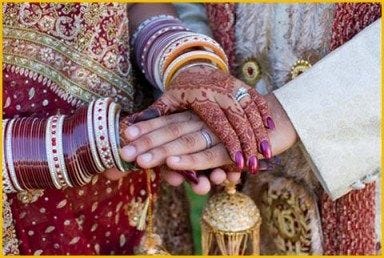Arranged Marriages: Not the way Americans think they are
In my discussions with Americans, I have been asked many times about the practice of finding a partner amongst the Indians. Behind the question, most of the folks are curious and intrigued by the “Arranged Marriage” principle. The fact that someone could meet once with a prospective partner and then decide to live the entire life with him/her. Some don’t even get that privilege and never get to meet.
To me, it sounds like an ironic question coming from a people where divorce rates are so high and singles find it so hard to, first marry and then to sustain that marriage.
I know there are many versions of Arranged marriage, but by and large, in the urban centers, this practice now follows predictable steps:
Parents of a girl or a boy take out an advertisement in the newspapers in the Matrimonial section or the “Singles Ad” column in American lingo. These are usually with the relevant information. The ad could also be online at a “Singles/Matrimonial” site.
Parents and the kids look at the ads from other folks and shortlist the “candidates” they would like to explore further. Girls parents look for boys and vice versa.
There is usually a list of criteria that these parents and the prospective bride / groom have in mind…. and the shortlist is based on that criteria.
Then parents reach out to those shortlisted families.
The families meet and usually nowadays, the girl and the boy meet outside for a planned date.
If they want another meeting, then even that is arranged. If things seem positive, then generally enough inquiries are done by the parents of either side about the other to find out more. This helps to get more information and a better understanding of the other family and the person.
Now, taking marriage as a “Project”, one can look at this entire process in terms of “Stakeholder buy-in”. Unless all the stakeholders have a “buy-in”, the marriage has very little chance of success. So, everyone “blesses” the union. What this “buy-in” does is:
Since the parents and kids have both acquiesced to the relationship, there is little room for conflict later. Well, it is not so straightforward, is it? 🙂 Anyway, let’s just say, the intensity and the criticality of the consequences, if a conflict does arise, is reduced.
As is often the case, a conflict between the couple arises sooner or later. That’s when the “Stakeholders” step in and manage the situation. At least that’s how people think.
Now, even if the Stakeholder mechanism may not completely and efficiently kick in, but some of it does work in different degrees in various marriages. And that, in my view, is the secret to Arranged Marriages leading to fewer divorces than the “Love Marriages” in India.
I do admit that a bad marriage is nothing to celebrate, and sometimes, using a Chicago divorce lawyer and getting a divorce may be better for the couple – and even for the kids – than living in a useless marriage. But, as one looks at the modern-day divorces, one sees that they occur more out of ennui rather than irretrievable relationships.
Love, as most of us, keep defining our emotion as is not permanent or even sustainable. It’s usually a proxy for physical attraction or personality attraction. I would find it questionable whether such an attraction could be sustained. Usually, it’s not.
And that’s the rub in the American societies (and Love marriages in India) vs Arranged Marriages in India. Some people may get caught in bad relationships. However, with arranged marriages, there usually isn’t a clear way out of it for those who are unhappy. For those in arranged Indian marriages, they are almost trapped. Whereas, for those in marriages in America, they can always get out of these marriages if they’re unhappy by contacting Simon Law Group, for example. Americans have the option to divorce, whereas those in arranged marriages don’t always have that freedom.
And guys, in this arranged marriage system, at least in the urban version, BOTH – the boy and the girl have the right to refuse the person their parents suggest. So, even though there is counsel from the elders, the decision of the boy and the girl does hold strong weight.
Therefore, usually, this practice is not the way it is believed to be outside of India.
Would you agree?




